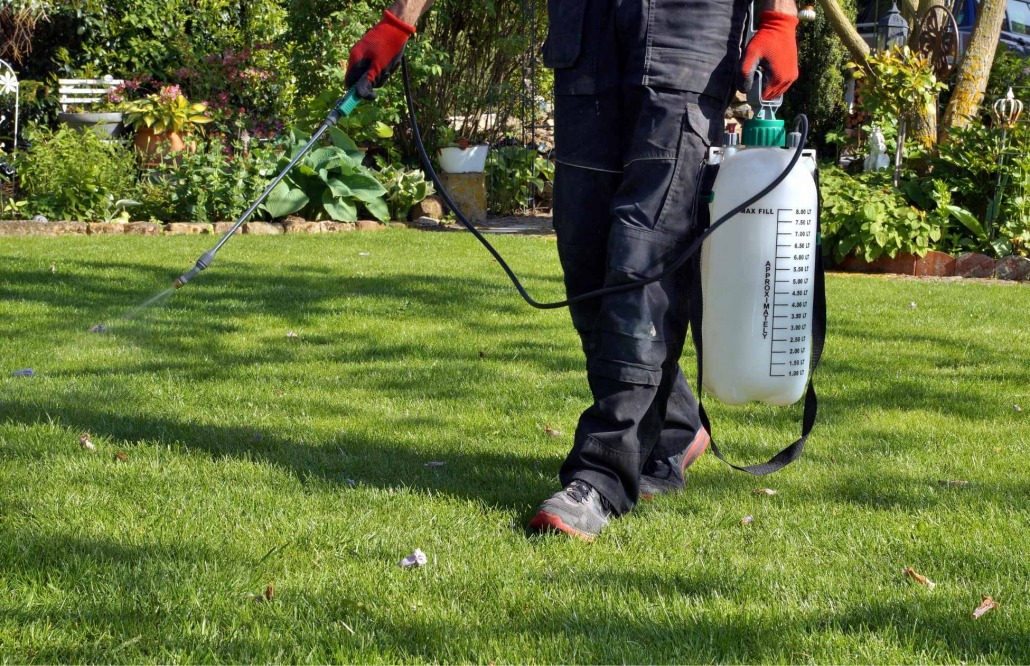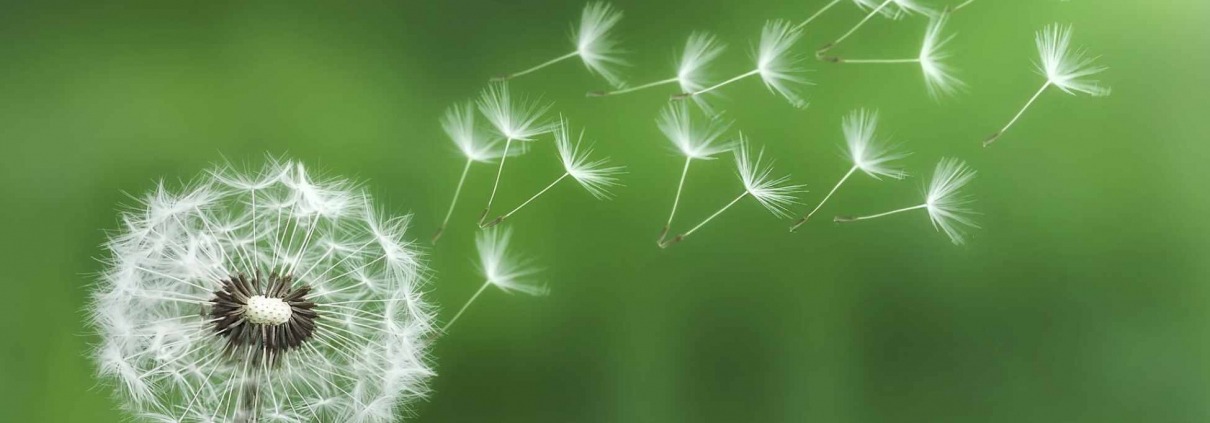Embracing the Wild Side: The Benefits of Keeping Weeds in Your Lawn
APP Expert / Friday June 16, 2023
Introduction
Did you know that weeds cane be a huge benefit to your lawn? For example, weeds like clover are known to be great nitrogen fixers. They can draw atmospheric nitrogen into the soil, and ultimately improve soil productivity levels. Clover and other legumes are also quite beneficial for pollinators, such as bees, in providing a crucial source of nectar and pollen. When allowed to grow, weeds can act as a natural fertilizer, soil conditioner, and even as an edible herb.
Gardeners and homeowners have been grappling with weeds in their lawns for centuries. Often regarded as an unwelcome sight, weeds are seen as detractors in the quest for a perfect, green, carpet-like lawn. However, an increasing number of people are beginning to reconsider this perspective. Studies show that weeds have a lot of benefits to offer.
Biodiversity and Ecological Balance
Weeds maintain ecological balance, promote biodiversity, and support a thriving garden ecosystem. Dandelions, clover, and plantain are among the many weeds that provide essential habitats and food sources. They support a wide range of beneficial insects, birds, and other wildlife. These often-underappreciated plants create a network of interconnected relationships that are vital to the health and sustainability of the ecosystem.
Letting weeds grow in your lawn fosters a diverse environment that supports many species. Each weed has unique attributes that draw specific pollinators and insects, thereby sustaining populations critical to your garden’s overall health. Dandelions, with their bright yellow flowers, provide an early source of nectar for bees and butterflies. This aids in their survival during crucial periods.
Moreover, weeds contribute to the natural food chain, acting as a source of nourishment for insects, birds, and small mammals. Various weed seeds, leaves, and flowers provide valuable nutrition for wildlife, particularly during periods of limited food availability. In this way, weeds form an intricate web of life, supporting the biodiversity of your garden and creating a harmonious ecosystem.
In addition to providing habitats and food sources, weeds have deep roots that penetrate and break up compacted soil. This natural process improves soil structure and promotes better water infiltration and aeration. The loosened soil allows plant roots to access nutrients more easily and enhances overall plant health in your garden. The interplay between weeds and other plants fosters a balanced and interconnected system. Each contributes to the well-being of the whole ecosystem.
Pollinator Support
By letting these little plants grow and thrive in your garden, you’re not just feeding our pollinator friends but also contributing to the preservation of the natural world’s diversity. It’s fascinating to see how these often-unnoticed plants contribute holistically to the thriving of nature. Many people disregard weeds as pesky intruders, but they fail to recognize that weeds actually contribute to the overall health of the local ecosystem by providing an essential source of nectar and pollen for pollinators like bees, butterflies, and other insects. By letting these little flowers grow and thrive, you’re not only feeding our pollinator friends but also helping preserve the natural world’s diversity.
Many people disregard weeds as pesky intruders, but they fail to recognize that weeds actually contribute to the overall health of the local ecosystem by providing an essential source of nectar and pollen for pollinators like bees, butterflies, and other insects. By letting these little flowers grow and thrive, you’re not only feeding our pollinator friends but also helping preserve the natural world’s diversity.
It’s more important now than ever before to create spaces that support pollinators because of the declining population of these essential species worldwide. In creating pollinator-friendly environments where these plants can reproduce, we contribute to a thriving, diverse ecosystem. It is full of breathtaking life and wonder that is available for all of us to appreciate.
Reduced Pesticide Use
By allowing some weeds to thrive in your lawn, you are providing a more diverse and healthier ecosystem. So let’s embrace this natural approach to lawn care and contribute to a more sustainable environment. By practicing a natural approach to lawn care, you reduce the need for harmful pesticides. Additionally, you promote biodiversity in your garden. Weeds often provide a habitat or food source for beneficial insects, such as bees and butterflies. Furthermore, the use of synthetic pesticides can contaminate water sources and lead to the emergence of pesticide-resistant pests.
Natural lawn care promotes biodiversity and reduces reliance on harmful pesticides. Weeds often provide a habitat or food source for beneficial insects, such as bees and butterflies. Furthermore, the use of synthetic pesticides can contaminate water sources and lead to the emergence of pesticide-resistant pests.

Drought Tolerance
Many people consider weeds a nuisance to be eradicated from the lawn, but they often overlook the several benefits offered by certain weeds such as dandelions, thistles, and clover. These weeds are known for their hardiness and ability to thrive under a wide range of environmental conditions, including drought. By choosing to embrace these weeds and allowing them to grow alongside your grass, you can create a more resilient lawn. This resilience enables it to better withstand periods of low rainfall. With climate change leading to unpredictable weather patterns, protecting your lawn from extended drought damage is essential.
Apart from their resilience, the presence of these weeds can also enrich the soil and improve the overall health of your lawn. For example, clover can help to add nitrogen to the soil, an essential nutrient for healthy grass growth. By embracing the natural diversity that weeds can bring to your lawn, you can create a more vibrant and sustainable outdoor space that will stay beautiful year-round. Moreover, a lush green garden is not only beneficial to the environment but also aesthetically pleasing, providing an opportunity to reconnect with nature and enjoy the beauty of the outdoors.
Natural Remedies and Edible Weeds
Some of the weeds in your lawn can actually be your friends! Dandelions, plantain, and other common weeds have been utilized for centuries as natural remedies across a diverse range of cultures. These plants offer a variety of attributes that are beneficial to our health. They can be infused in teas to alleviate the common cold, or used in digestive tinctures for all kinds of remedies.
What’s more, growing these plants in your lawn will give you access to an abundance of nature’s remedies and allow you to explore their versatility. Beyond their health benefits, they can be used for a variety of purposes, such as creating handcrafted herbal infusions for relaxation, natural dyes, or homemade salves. The possibilities are endless.
But there’s more to these plants than just their medicinal and utilitarian values! Many of them are, in fact, edible, and surprisingly delicious. For instance, dandelion greens are quite high in vitamins A, C, and K, and can be used in salads or sautéed for a delightful side dish. Incorporating these edible weeds into your meals has added health benefits such as reduced food waste and nutrient-rich dishes.
Next time you’re prepping to weed, think of the many possibilities these usually pesky plants have to offer!
Aesthetic Appeal
Finally, it’s important to remember that beauty is subjective and lies in the eye of the beholder. The traditional image of a perfect lawn is a uniform, weed-free expanse of green. However, there is a growing appreciation for the natural beauty and diversity that weeds can bring to a landscape.
Allowing weeds to grow in your lawn can create a unique and enchanting tapestry of colors, shapes, and textures. Each weed has its own distinct character, from the yellow blooms of dandelions to the intricate patterns of clover leaves. These weeds intermingling with grass can add depth and visual interest to your garden, transforming it into a living canvas.
Furthermore, the presence of weeds can evoke a sense of wildness and naturalness, creating a more organic and harmonious environment. The subtle shifts in height and variations in foliage contribute to a more dynamic and visually appealing landscape, reminiscent of untouched meadows or prairies. This aesthetic appeal extends beyond the boundaries of traditional landscaping and embraces the beauty of nature’s diversity.
Conclusion
By embracing an eco-friendly and sustainable approach to lawn care, we can support biodiversity. We can also provide essential resources for pollinators, reduce reliance on harmful pesticides, and foster a resilient and adaptable landscape.
It’s time to challenge the traditional image of the perfect lawn and appreciate the beauty and functionality that weeds can offer. By changing our mindset and accepting the presence of weeds in our lawns, we can contribute to a healthier, more sustainable world. Next time you see a dandelion or clover in your yard, resist the urge to remove them and instead recognize their positive impact on your garden’s ecosystem. After all, the real beauty of a garden lies not in its uniformity but in the diversity and harmony of the living beings that call it home.
Hi! I’m Matt H., and I’m thrilled to be your guide through the world of appliance repair with over 25 years of invaluable experience in the industry.
From the early days of my career, I have been deeply passionate about appliances and their inner workings. Over the years, I’ve seen it all – from vintage models to the latest cutting-edge technology – and I’ve dedicated myself to mastering the art of repair. With a toolbox in one hand and a wealth of knowledge in the other, I’ve tackled every challenge that has come my way, learning and growing with each repair.
Join me as we dive into the intricacies of appliance repair. From step-by-step repair guides to explanations of common problems and their solutions, I’ll be here to simplify the repair process and empower you with the knowledge you need to keep your appliances running smoothly.
Feel free to explore our blog, ask questions, and leave comments – this platform is a space for learning, sharing, and growing together. Let’s work together to ensure that your appliances continue to serve you for years to come.
Thank you for joining me on this journey, and I look forward to being your go-to resource for all things related to appliance repair!



Leave a Reply
Want to join the discussion?Feel free to contribute!